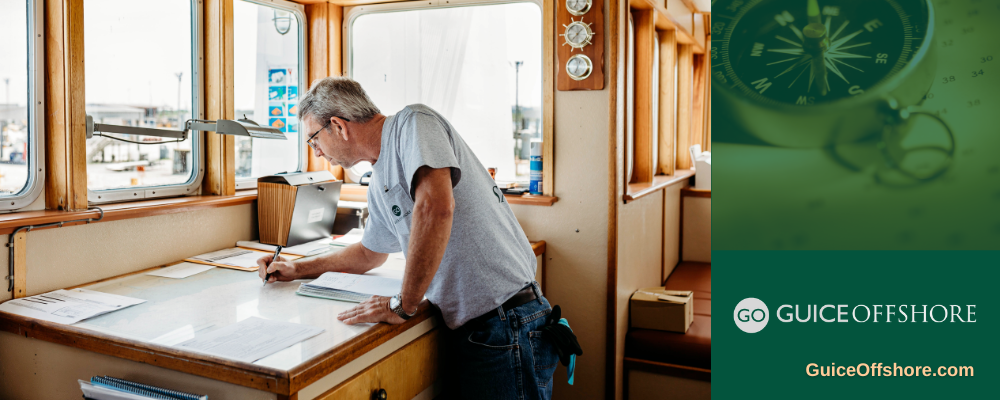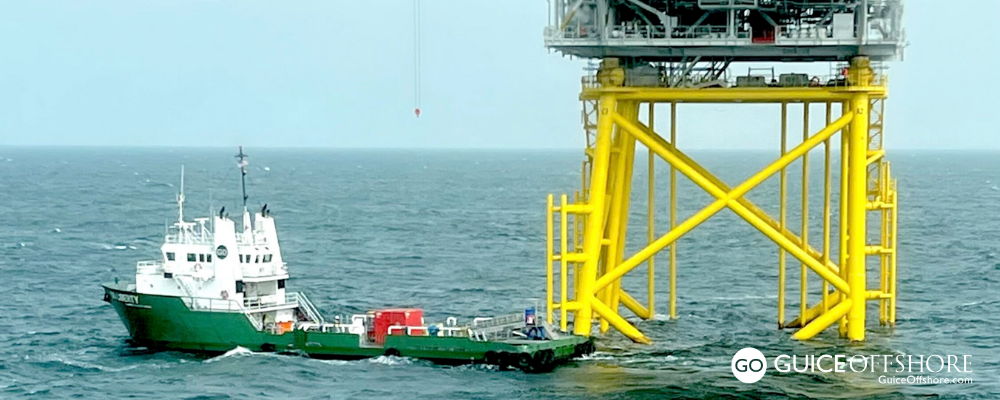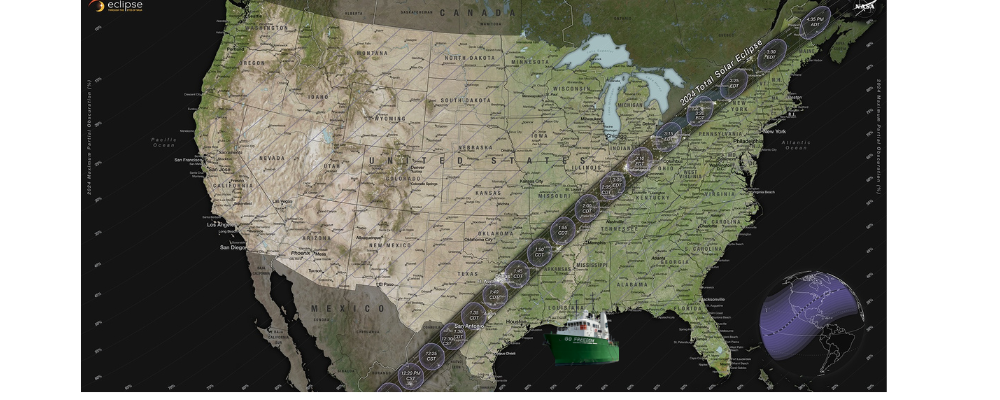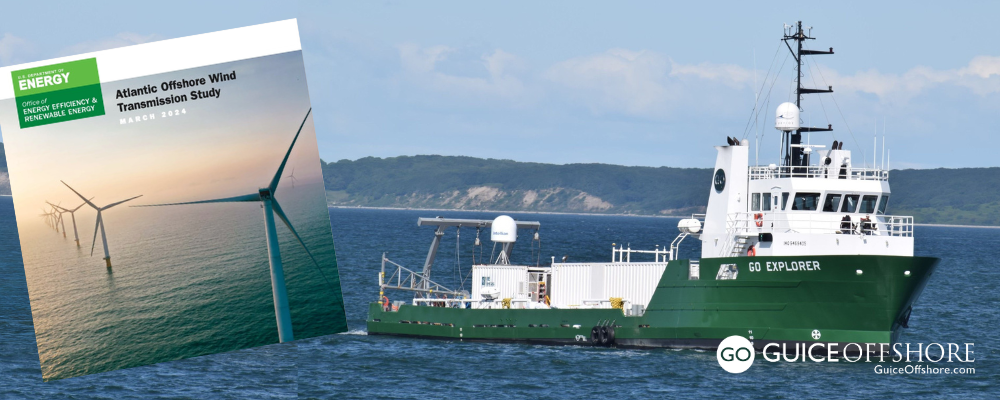Maritime navigation is about to become safer, easier and more efficient thanks to the new “Harmonized Waterways” project, part of massive joint effort by the National Oceanic and Atmospheric Administration (NOAA), the U.S. Coast Guard (USGC) and the Department of Homeland Security (DHS) to synchronize identifiers (such as names and abbreviations) for rivers, bays and maritime landmarks across all government agencies.
Because the seafloor and coastline are dynamic environments, NOAA explains that’s why the government’s mapping products are constantly scrutinized for possible changes. In any given year there can be thousands of updates to them.
“The Harmonized Waterways project will help immensely as we transition away from traditional paper charts and focus on electronic charts as the primary product for navigation,” said Admiral Benjamin Evans, director of NOAA’s Office of Coast Survey. “Working in concert with other agencies helps us do this in an efficient, unified manner.”
In the past, if an emergency occurred on the water or a shipping channel was altered, NOAA’s navigational charts were amended to reflect the change. The USGC would then reference the changes using chart numbers in each of its weekly Local Notice to Mariner reports. Federal and state entities occasionally gave distinct names and identifiers to the same features and landmarks, leading to potential confusion for recreational boaters, commercial fisherman and companies involved in international shipping.
In 2019, NOAA began to shift from paper charts to electronic navigational charts and online mapping tools. NOAA also began to uniquely identify waterways as a part of the Waterway Harmonization project. Doing so ensured that all involved agencies were in agreement about what to call each feature.
As a part of the move to phase out the old paper charting system, NOAA is also running a pilot program that allows citizens to submit their own data about waterways and landmarks for expert verification, further highlighting the need to standardize naming conventions. Previously, the source data for most of the updates made to nautical charts came from NOAA research teams or contractor surveys or federal partners.
Once completed the new charting system and all of the new naming conventions will be fully accessible to the public.
U.S. Coast Guard to Host and Maintain Geospatial Dataset
The DHS Science and Technology Directorate (S&T) is currently in process of delivering a harmonized geospatial dataset of national waterways to all federal agencies that comprise the U.S. Committee on the Marine Transportation System (CMTS). The “Harmonized Waterway” project and the delivered dataset will enable enhanced delivery of critical Marine Safety Information (MSI) to mariners in U.S. waters, as well as improve inter-agency coordination to advance federal waterways management.
The Coast Guard will host and maintain this geospatial dataset and make this information available online at no cost to the public. In addition, waterways managers/planners, industry leaders and researchers will have a new tool to help study and monitor our national waterways.
“The Harmonized Waterway dataset will make it possible for anyone using U.S. waterways—from ships engaged in international trade and commercial fishermen, to recreational boaters—to go online to find the navigational information they need to sail in U.S. waters,” said Dr. Dimitri Kusnezov, DHS Under Secretary for Science and Technology.
With the delivery of the database, the Coast Guard will now transition its delivery of MSI from referencing the National Oceanic and Atmospheric Administration (NOAA) paper chart identification name/number to the harmonized waterway name.
“The transition away from paper charts and manual application of MSI to electronic charts allows the Coast Guard to improve our delivery of critical safety information to the mariner and represents a major milestone in our efforts to implement the CMTS Strategic Implementation of e-Navigation,” said Mike Emerson, the Coast Guard’s director of Marine Transportation Systems.
“The Harmonized Waterway project will help immensely as we transition away from traditional paper charts and focus on electronic charts as the primary product for navigation,” said NOAA Admiral Benjamin Evans, director of NOAA Office of Coast Survey. “Working in concert with other agencies helps us do this in an efficient, unified manner.”
“The Harmonized Waterway program is a major leap forward for the U.S. Marine Transportation System and its ability to provide mariners with the best information for navigating our waterways. The success of this project also highlights the importance of our interagency collaboration and partnerships, and the CMTS has been a proud supporter of this project since its inception,” said Helen Brohl, executive director, CMTS.
Another benefit the Harmonized Waterway data affords the maritime community is to deconflict and synchronize names and abbreviations for rivers, bays and landmarks, which can differ between local, state, and federal agencies.
“The database is much more agile and can be updated and made available to mariners electronically much more quickly than paper charts,” said David Paquette, S&T Maritime Safety and Security program manager.
The Coast Guard is coordinating the release of its revised Local Notice to Mariner reports with NOAA and anticipates the transition will begin in 2023.
For more information about S&T’s innovation programs and tools, visit www.dhs.gov/science-and-technology/business-opportunities.
Modern History of U.S. Nautical Charts and Publications
The Coast and Geodetic Survey Act of 1947 and the Hydrographic Services Improvement Act requires that NOAA compile and distribute nautical charts and other nautical publications. These statutes do not specify a particular format for chart products. NOAA and its predecessor agencies have produced paper nautical charts of the U.S. Coasts, its territorial waters, and the Great Lakes since the mid-1800s. NOAA has produced electronic navigational charts (ENCs) since 1993.
The International Maritime Organization now mandates that all large commercial vessels on international voyages use ENCs. In 2016, the USCG started allowing regulated commercial vessels on domestic voyages to use ENCs in lieu of paper charts. Recreational boaters are also increasingly using electronic chart displays.
Use of NOAA ENCs surpassed paper nautical charts in 2011. ENC sales increased 425 percent since 2008, while sales of paper charts are now half of 2008 levels. The current NOAA nautical chart product suites comprise 1,258 electronic navigational charts (NOAA ENC®) and 1,007 NOAA raster/paper nautical charts. NOAA has started a multi-year program to create a standard gridded layout and increase the scale of ENCs. This will increase the number of detailed NOAA ENCs to about 9,000.
NOAA is undertaking a five-year program to end all raster and paper nautical chart production. Ultimately, production of all NOAA paper nautical charts, raster navigational charts (NOAA RNC®), and related products, such as BookletChartsTM will cease.
NOAA is taking steps to provide a NOAA Custom Chart web-based application that will enable users to download and print raster chart backup files created from the most up-to-date ENC data.
The NOAA Custom Chart prototype is available from https://devgis.charttools.noaa.gov/pod.
These chart backup files will look somewhat different than traditional paper nautical charts, but will provide a similar functionality.
Harmonized Waterways FAQ
NOAA’s Office of Coast Survey has compiled a comprehensive list of Frequently Asked Questions about the new charting transition HERE.
Additional documentation on the project can be accessed through the links below.
State-of-the-Art Navigation Technology and Dynamic Positioning is Standard on All Guice Offshore Vessels
Each Guice Offshore vessel is outfitted with the most modern and well-maintained maritime technology to ensure accurate, dependable operation of its dynamic positioning system, including tools like radar, global positioning systems (GPS), autopilot, satellite communications, VHS and SSB radios, and echo sounders.
Guice Offshore’s largest vessels, the GO Adventurer and the GO Crusader, both feature DP2 technology, a designation determined by the International Maritime Organization (IMO) to indicate the vessel can be used under certain conditions like diving and heavy lifting that require multiple onboard safety redundancies. All other Guice Offshore vessels are equipped with DP1 capabilities.
Dynamic positioning affords excellent performance for maritime jobs that require easy, rapid maneuverability and quick setup. Applications include ocean surveying, diving or platform support, pipe or cable-laying, salvage, aerospace recovery and marine research, among other uses.



